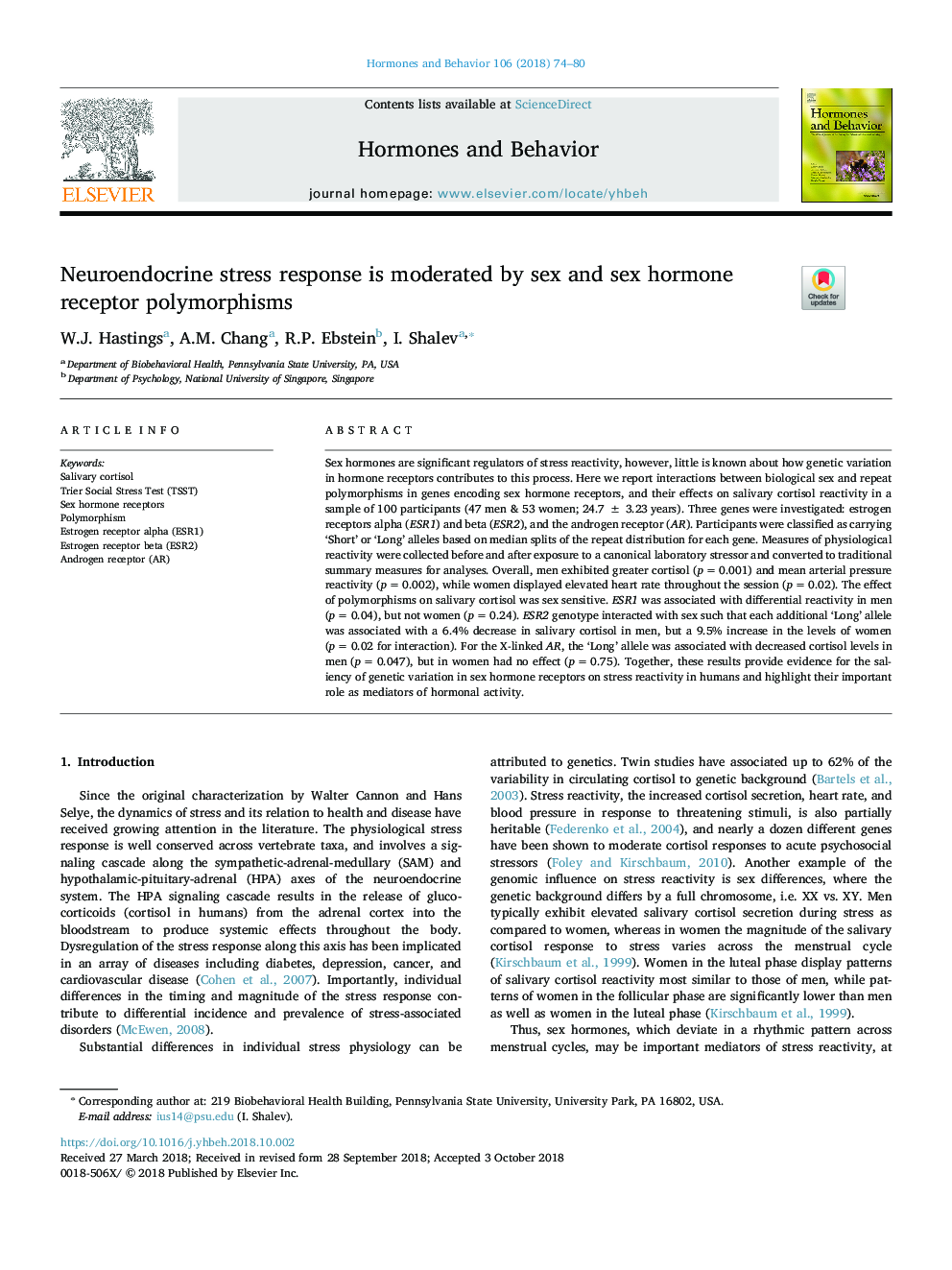| کد مقاله | کد نشریه | سال انتشار | مقاله انگلیسی | نسخه تمام متن |
|---|---|---|---|---|
| 11030167 | 1646372 | 2018 | 7 صفحه PDF | دانلود رایگان |
عنوان انگلیسی مقاله ISI
Neuroendocrine stress response is moderated by sex and sex hormone receptor polymorphisms
ترجمه فارسی عنوان
پاسخ استرس نوروآندوکرین با پلی مورفیسم گیرنده جنسی و جنسی است
دانلود مقاله + سفارش ترجمه
دانلود مقاله ISI انگلیسی
رایگان برای ایرانیان
کلمات کلیدی
موضوعات مرتبط
علوم زیستی و بیوفناوری
بیوشیمی، ژنتیک و زیست شناسی مولکولی
علوم غدد
چکیده انگلیسی
Sex hormones are significant regulators of stress reactivity, however, little is known about how genetic variation in hormone receptors contributes to this process. Here we report interactions between biological sex and repeat polymorphisms in genes encoding sex hormone receptors, and their effects on salivary cortisol reactivity in a sample of 100 participants (47 men & 53 women; 24.7â¯Â±â¯3.23â¯years). Three genes were investigated: estrogen receptors alpha (ESR1) and beta (ESR2), and the androgen receptor (AR). Participants were classified as carrying 'Short' or 'Long' alleles based on median splits of the repeat distribution for each gene. Measures of physiological reactivity were collected before and after exposure to a canonical laboratory stressor and converted to traditional summary measures for analyses. Overall, men exhibited greater cortisol (pâ¯=â¯0.001) and mean arterial pressure reactivity (pâ¯=â¯0.002), while women displayed elevated heart rate throughout the session (pâ¯=â¯0.02). The effect of polymorphisms on salivary cortisol was sex sensitive. ESR1 was associated with differential reactivity in men (pâ¯=â¯0.04), but not women (pâ¯=â¯0.24). ESR2 genotype interacted with sex such that each additional 'Long' allele was associated with a 6.4% decrease in salivary cortisol in men, but a 9.5% increase in the levels of women (pâ¯=â¯0.02 for interaction). For the X-linked AR, the 'Long' allele was associated with decreased cortisol levels in men (pâ¯=â¯0.047), but in women had no effect (pâ¯=â¯0.75). Together, these results provide evidence for the saliency of genetic variation in sex hormone receptors on stress reactivity in humans and highlight their important role as mediators of hormonal activity.
ناشر
Database: Elsevier - ScienceDirect (ساینس دایرکت)
Journal: Hormones and Behavior - Volume 106, November 2018, Pages 74-80
Journal: Hormones and Behavior - Volume 106, November 2018, Pages 74-80
نویسندگان
W.J. Hastings, A.M. Chang, R.P. Ebstein, I. Shalev,
